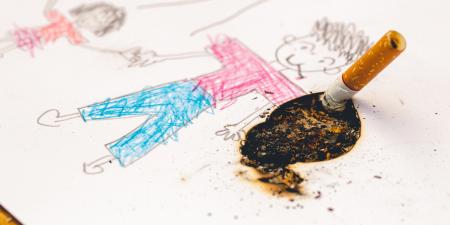In 1973, Dax Cowart was critically injured in a propane gas explosion that took the life of his father. The ensuing care that he received, despite his opposition to it, prompted him to pursue study of the legal and ethical issues related to his treatment following his recovery. He would go on to advocate for the view that it was wrong for clinicians to disregard his wish to be allowed to die and to promote greater respect for patient autonomy. Through his activism, he opened the door to constructive discourse on ethical issues surrounding the practice of burn care.1
Despite the discussion of burn care ethics initiated by Dax’s case, there has been a paucity of literature published since. In a review of literature presented to the American Burn Association, Khandelwal and colleagues found only 53 articles on burn care ethics published between 1975 and 2015, with the majority of publications focusing on respect for patient autonomy and end-of-life care.2 With an estimated 40 000 burn-related hospitalizations in 2016 alone3 and issues of pain management, live skin grafting, end-of-life decision making, and burn prevention continually evolving, the existing literature seems deficient. The lack of literature may, in part, be due to a lack of communication between ethicists and the primary health care team. For example, an informal poll conducted in 2015 at the American Burn Association showed that only 3 of the nation’s 128 burn centers had an ethicist rounding with their teams regularly.2Consequently, we have yet to determine how best to approach ethical issues that arise in burn care.
This issue of the AMA Journal of Ethics seeks to open dialogue on burn care ethics. The contributors use various approaches and perspectives to examine a range of clinical and policy issues in an effort to identify and understand some of the most pressing ethical issues that arise in burn care.
Pain is a complex construct with significant impact on the burn patient. The long-lasting course of burn wounds, their excessive healing time, and the repetition of highly nociceptive procedures can result in extreme distress if pain control is inappropriate.4 In a case of differential treatment of pain in a pediatric and an adult burn patient, Sharmila Dissanaike reviews the differing approaches to pain management in adults and children and argues for the need for individualized pain management strategies that include nonpharmacological adjuncts.
Early excision and autologous skin grafting are the gold standard for large burns.5 In instances in which grafts from autologous tissue cannot be procured, donated skin—either cadaveric or live—can be used. In developed countries with resources to maintain cadaveric skin banks, live skin donation is used only in the case of identical twins.6 In such cases, using live skin donation can greatly reduce recovery time, hospital stay, and, consequently, burn-related morbidity and mortality.7 In a case of a potential identical twin donor, Anjay Khandelwal explores the risks and benefits to donors and recipients of monozygotic sibling (MZS) skin grafting.
End-of-life decision making is an issue often dealt with in burn care and medicine as a whole. In the care of burn patients, survival and function have historically been at the forefront of decision making. Recovering from burn injuries is a difficult and emotional experience for patients, who face painful treatments and sometimes a process of personal transformation, depending on the extent of their wounds. In the podcast, Monica L. Gerrek and Andrea Rubin explore what clinicians can learn from patient experiences and strategies for providing sensitive and individualized care.
Goals-of-care discussions, however, have evolved to incorporate cosmesis as well. In a case of potential surrogates with conflicting views on the preferences of an unconscious burn patient, Yuk Ming Liu and Kathleen Skipton Romanowski examine the scope and role of surrogate decision makers, how to weigh different goals of care, and how physicians should respond when surrogates suggest disfigurement as a reason for withdrawing care.
In the rigors of clinical practice, it is often easy to lose sight of our patient’s lives outside the medical setting. Debra Reilly and Steve Langan discuss how creative writing can help physicians start conversations with burn patients and their families in new ways and develop deeper relationships with them.
To understand the current nature of burn care, it is important to have a historical and conceptual perspective. Gerrek compares the oft-cited case of Dax Cowart to that of a more recent burn patient, Andrea Rubin, to examine medical decision making in burn care. More specifically, she examines the role of paternalism through the lens of these patients’ experiences, calling into question the assumption that paternalism is problematic and disrespects patients’ autonomy and arguing for a more nuanced understanding of burn patient decision-making capacity and autonomy. Chad M. Teven and Lawrence J. Gottlieb provide an alternative to principlism for approaching complex ethical issues in burn care. In particular, they show how the “four quadrant” approach of Jonsen, Siegler, and Winslade8 can help burn care physicians navigate complex ethical issues they might face in the care of burn patients.
Two articles explore the role of policy and education in burn care. Jeffery Shupp and Laura S. Johnson discuss the exclusion of burn patients from research on quality metrics and why these metrics are inappropriate for delivering burn care. Patrick T. Delaplain and Victor C. Joe discuss the overwhelming patient burden of burn care delivery and inequities in the current system as a result of overtriage. They argue that these problems are exacerbated by the lack of fundamental burn and wound care knowledge among graduating medical trainees and outline the need for formalized burn care curricula in medical training to provide better care for patients suffering from burns.
Finally, two articles discuss care of burns in underserved and vulnerable populations. Shelley Wall, Nikki Allorto, Ross Weale, Victor Kong, and Damian Clarke explore ethical challenges in providing burn care in low- and middle-income countries, which lack resources found in high-income countries. They also offer insight into how predictive mortality scores can be adapted in these settings to allocate resources to at-risk patients and thereby address issues of access to care and justice. And Lauren C. Nigro, Michael J. Feldman, Robin L. Foster, and Andrea L. Pozez discuss a new multidisciplinary method for identifying suspected nonaccidental pediatric burns, which might provide a more reliable method for identifying victims of abuse and preventing readmissions.
This issue of the AMA Journal of Ethics brings attention to the ethical dilemmas clinicians encounter when caring for patients suffering from burn injuries. It seeks to provoke thought about the clinical and policy dimensions of burn care in an effort to understand how best to approach ethical issues that arise in burn care and provide better care for patients.
References
-
Hurst AR, Mahanes D, Marshall MF. Dax’s case redux: when comes the end of the day? Narrat Inq Bioeth. 2014;4(2):171-177.
-
Khandelwal A, Keller S, Gerrek M. The Institute of Burn Ethics: filling a void. Poster presented at: 47th Annual American Burn Association Conference; April 21-24, 2015; Chicago, IL.
-
American Burn Association. Burn incidence fact sheet. http://ameriburn.org/who-we-are/media/burn-incidence-fact-sheet/. Accessed April 30, 2018.
- Latarjet J, Choinère M. Pain in burn patients. Burns. 1995;21(5):344-348.
-
Rowan MP, Cancio LC, Elster EA, et al. Burn wound healing and treatment: review and advancements. Crit Care. 2015;19:243. doi:10.1186/s13054-015-0961-2.
- Melandri D. Organization and purposes of a burns centre skin bank. Ann Burns Fire Disasters. 2003;16(4):200-203.
- Tilden SJ. Ethical and legal aspects of using an identical twin as a skin transplant donor for a severely burned minor. Am J Law Med. 2005;31(1):87-116.
-
Jonsen AR, Siegler M, Winslade WJ. Clinical Ethics: A Practical Approach to Ethical Decisions in Clinical Medicine. 6th ed. New York, NY: McGraw-Hill; 2006.



